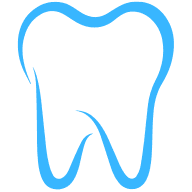Dental insurance coverage can be a labyrinth of terms and conditions, leaving many feeling overwhelmed. This blog post aims to demystify the complexities of dental insurance coverage, providing you with the knowledge you need to make informed decisions about your oral health. We'll delve into the intricacies of dental insurance policies, coverage types, and how to maximize your benefits.
Understanding the Basics of Dental Insurance
Dental insurance operates similarly to health insurance. It's a contract between you and your insurance company. You pay premiums, and in return, the insurance company pays a portion of your dental costs. However, dental insurance often comes with a maximum coverage limit. Once you reach this limit, you're responsible for all additional costs.
Dental insurance typically covers preventive care, like cleanings and check-ups, at 100%. Basic procedures such as fillings and extractions might receive 70-80% coverage, while major procedures like crowns and root canals could be covered at 50%. It's important to note that these percentages can vary widely depending on your specific plan.
Types of Dental Insurance Plans
There are several types of dental insurance plans, each with its own set of rules and coverage. The most common types include Preferred Provider Organizations (PPOs), Dental Health Maintenance Organizations (DHMOs), and indemnity plans.
PPOs offer a network of dentists who agree to perform services at lower rates. You have the freedom to choose any dentist, but you'll pay less if you select a dentist within the network. DHMOs, on the other hand, require you to choose a dentist within the network, and you may need a referral to see a specialist. Indemnity plans allow you to see any dentist you want, but they typically have higher out-of-pocket costs.
Deciphering Dental Insurance Terms
To fully understand your dental insurance coverage, you need to familiarize yourself with common insurance terms. The premium is the amount you pay to the insurance company, usually monthly. The deductible is the amount you must pay out-of-pocket before your insurance starts to cover costs.
Coinsurance is your share of the costs of a dental service, calculated as a percentage. For example, if your insurance covers 80% of the cost of a filling, you're responsible for the remaining 20%. The annual maximum is the most money your insurance will pay for your dental work within a year.
Maximizing Your Dental Insurance Benefits
To get the most out of your dental insurance, you need to understand your policy and use your benefits wisely. Regular preventive care can help avoid costly procedures down the line. Since most insurance plans cover preventive care at 100%, make sure to schedule regular check-ups and cleanings.
If you're facing a costly procedure, consider scheduling it in a way that maximizes your annual maximum. For example, if you have two procedures and your annual maximum won't cover both in one year, schedule one for December and the other for January of the next year. This way, you can utilize two years' worth of maximums.
Navigating Out-of-Network Care
Sometimes, the dentist you want to see isn't part of your insurance network. In such cases, you'll likely pay more out-of-pocket. However, some insurance plans offer out-of-network benefits, which means they'll cover a portion of the costs.
Before you decide to go out-of-network, it's crucial to understand the potential costs. Contact your insurance company to find out what they'll cover and ask your dentist for a cost estimate. This way, you can make an informed decision about whether the additional cost is worth it.
The Role of Dental Discount Plans
Dental discount plans are not insurance, but they can provide an affordable alternative for those without coverage. For a monthly or annual fee, these plans offer discounted rates on dental services at participating providers. They can be a good option if you don't have dental insurance, or if you've reached your annual maximum and need additional care.
However, it's important to understand that dental discount plans don't offer the same protections as insurance. They won't cover a portion of your costs, but rather provide a discount on the total cost. Always read the fine print and understand what you're getting before signing up for a dental discount plan.
Demystifying Dental Insurance: A Recap
Understanding dental insurance coverage doesn't have to be a daunting task. By familiarizing yourself with the basics, understanding the different types of plans, and learning how to maximize your benefits, you can navigate your dental insurance with confidence. Remember, preventive care is key to maintaining oral health and avoiding costly procedures. And if insurance isn't an option, consider a dental discount plan to help manage costs.

